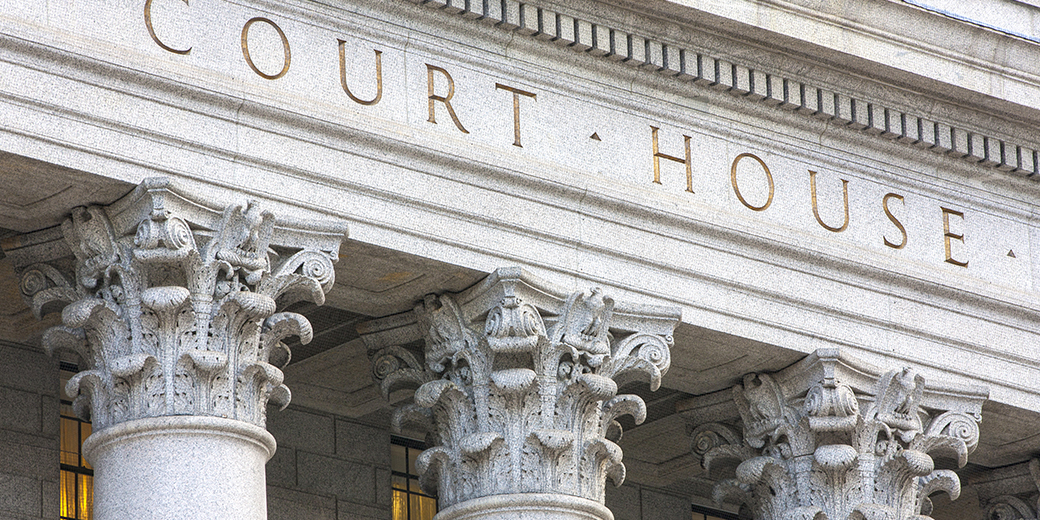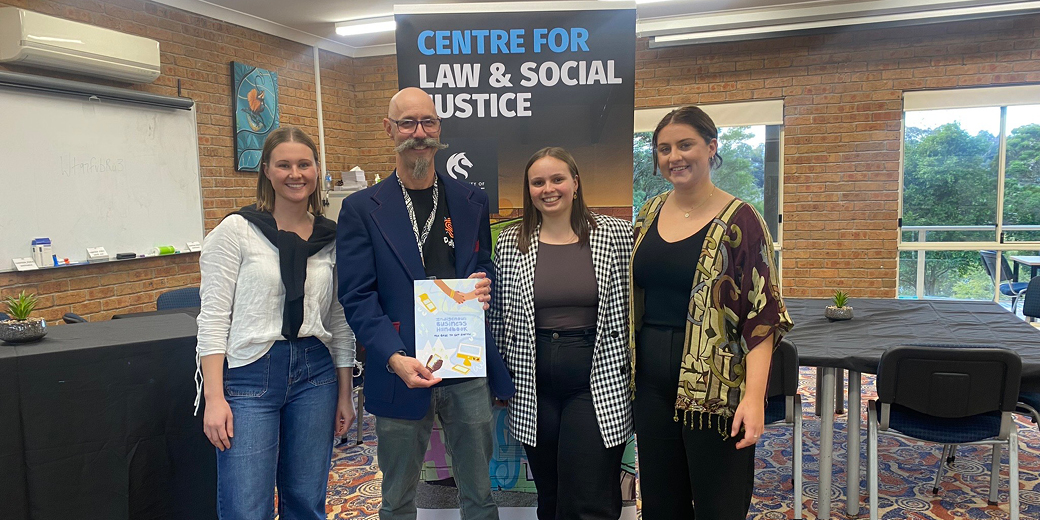To mark our 40th anniversary, The College of Law recently ran a survey asking for your view on the top 10 most influential High Court of Australia cases over the last 40 years. The responses you provided us showcased a range of landmark cases, spanning from Indigenous land rights, to clashes between territory and Commonwealth, to the David-vs-Goliath legal struggles of refugees.
Taking the No. 1 spot was Mabo v Queensland (No 2) – 1992. Please read on for the full list below.
Thank you to all who participated in the survey. The winners of the gift cards were: Francis Yang; Joanne Trentin; Sandii Hargrave; and Michael Bates.
Here’s to 40 years of thought-provoking legal precedent!
- Chamberlain v the Queen – 1984
- Al-Kateb v Godwin – 2004
- Ruddock v Vadarlis – 2001
- Minister of State for Immigration and Ethnic Affairs v Teoh – 1995
- Wik Peoples v Queensland – 1996
- The Commonwealth v ACT – 2013
- Dietrich v the Queen – 1992
- Waltons Stores (Interstate) Ltd v Maher – 1988
- Commonwealth v Tasmania – 1983
- Mabo v Queensland (No 2) – 1992
10. Chamberlain v the Queen – 1984
Perhaps one of the most widely broadcast murder trials in Australian history, Chamberlain v the Queen is often cited as a textbook example of the miscarriage of justice. The case related to the death of nine week-old baby Azaria Chamberlain on a family camping trip near Uluru, the prosecution’s claims that she had been murdered by her mother and her mother’s claims she had been taken by a dingo.
It’s difficult to pinpoint the prosecution’s biggest blunder in this case – their questionable blood testing, their dismissal of eye witness testimony which supported the defendant’s claims, their recruitment of a forensic scientist whose testimony had been overturned in a previous case – but then again, the idea that Lindy Chamberlain had murdered her baby may have seemed more plausible than the truth. When evidence emerged in 1986 to suggest that Azaria may have indeed been killed by a dingo (a claim that was finally verified by a coroner in 2012), Lindy Chamberlain was released from prison and eventually acquitted. If nothing else, this case proved that in law too, the truth can often be stranger than fiction.
9. Al-Kateb v Godwin – 2004
Coming in at Number Nine is arguably one of Australia’s most controversial immigration law cases. It began with the refusal of a temporary protection visa to Ahmed Al-Kateb, whose birth in Palestine to Kuwaiti parents deprived him of any citizenship. As he was legally defined as a stateless person and could therefore not be returned to his country of origin, the High Court of Australia ruled by majority that Al-Kateb could be detained indefinitely, and that indefinite detention of a stateless person was lawful. While Al-Kateb was released from detention in 2003 on the heels of a related case (
Al Masri vs Minister for Immigration & Multicultural & Indigenous Affairs, 2002), Al-Kateb v Godwin stands as a warning to the follies of the literal interpretations of the law.
8. Ruddock v Vadarlis – 2001
The second immigration case to grace this list, Ruddock vs Vadarlis struck at the very nature of the prerogative power of the Australian executive government. The case involved Norwegian cargo vessel MV Tampa, which was denied entry into Australia after rescuing 438 asylum seekers from their sinking boat. When the Tampa’s captain declared a state of emergency and entered Australian waters, the ship was boarded by Australian commandos and the asylum seekers were detained. The result was a civil suit by the Victorian Council for Civil Liberties and Victorian solicitor Eric Vadarlis, who sought a writ of habeas corpus for the asylum seekers.
Despite an initial court victory for Vadarlis and the VCCL, the Federal Government successfully appealed the ruling to the Full Court of the Federal Court of Australia, where it was found that the government does indeed possess a prerogative power to prevent the entry of non-citizens into Australia. While this case did not succeed in challenging prerogative power, it did prompt many in the legal profession to question their assumptions about what the government can and cannot do.
7. Minister of State for Immigration and Ethnic Affairs v Teoh – 1995
Rarely is international law successfully argued in Australia, however in the case of Teoh, one of the most ratified agreements in the world – the Convention on the Rights of the Child – played a pivotal role in avoiding a deportation. Originally a Malaysian national, Teoh raised a family in Australia before being convicted of heroin importation and possession. The Australian Immigration Minister moved to have Teoh deported, however Teoh’s appeal to the Federal Court of Australia saw the deportation order overturned.
6. Wik Peoples v Queensland – 1996
The Wik Decision was crucial to the trajectory of ongoing land rights in Australia. Pertaining to a strip of land on the Cape York Peninsula in Queensland, this case was brought before the Federal Court of Australia in 1993 to determine the native title rights of the Wik (and at a later stage Thayorre) Peoples. The decision of the High Court in 1996 to rule in favour of the Wik Peoples marked a milestone development in determining the competing claims of native title and statutory leases.
5. The Commonwealth v ACT – 2013
It was only ever a gesture, but the ACT’s sheer defiance of politicised ideas of marriage was as satisfying as it was short-lived. Here the High Court struck down the whole of the Marriage Equality (Same Sex) Act 2013 (ACT) for inconsistency with its federal counterpart. Silver lining did exist, however, with the High Court clarifying the scope of s 51 (xxi) – the Marriage Power – as one that was broad enough to include members of the same sex. In the five-day window, despite the looming shadow of annulment, 27 couples were married under the Act. Calls for a conscience vote at a federal level soon followed.
4. Dietrich v the Queen – 1992
Olaf Dietrich was an unlikely champion of human rights. Charged with smuggling heroin in condoms, he was at trial refused legal aid unless he pled guilty. In his High Court appeal, Dietrich’s QC turned to the ICCPR (International Covenant on Civil and Political Rights), and common law tradition to justify his right to a fair trial – which he felt ought to be provided at the expense of the state, given the seriousness of his crimes. Despite the fact that Dietrich went on to commit three armed robberies, his case remains good law for the right to a fair trial in Australia, with some suggesting this right is implicit in our constitution.
3. Waltons Stores (Interstate) Ltd v Maher – 1988
On the facts, it’s just another failed contract. Mr and Mrs Maher left high and dry with a demolished, half-rebuilt building and no contract with Waltons; classic David and Goliath. Why does this case make the cut for top 10, then? As any good contracts law student will tell you, it’s the case that established promissory estoppel as its own cause of action – as a sword, instead of a shield. The harshness of contract law ameliorated by equity; allowing for damages to be sought and principles like ‘unconscionable conduct’ to be cited. Having led the Mahers to believe a contract was on foot, Waltons owed damages despite never actually signing the contract. Definitely a winning day for David.
2. Commonwealth v Tasmania – 1983
Known far and wide as simply “the Tasmanian Dam Case”, the second-most influential case on this list is renowned as equal parts constitutional landmark and environmental victory. The case, which saw the Federal and Tasmanian governments clashing heads in the High Court of Australia, involved the proposed construction of a hydroelectric dam on the World Heritage-listed Gordon River in south-west Tasmania. While the Tasmanian Government vied for its legal right to construct the dam, the Federal Government set out to oppose it, citing – among other things – Australia’s obligations under the
World Heritage Convention.
With the passing of the historic World Heritage Properties Conservation Act 1983, the Federal Government won a 4:3 majority ruling in the High Court, thereby setting a new legal precedent and preserving a slice of Australian wilderness in one fell swoop.
1. Mabo v Queensland (No 2) – 1992
In 2007, Prime Minister Kevin Rudd
said sorry to Indigenous Australians. It was an apology which would not have been possible without Mabo.
Taking the Number One spot on this list by a landslide, Mabo v Queensland (No 2) was responsible for negating the 17th century doctrine of terra nullius and inserting native title into Australian law. By doing so, it not only rewrote the bedrock of national land law, but also acknowledged Indigenous Australians as the original inhabitants of Australia.
The case, which spanned over 10 years, revolved around the Meriam People’s campaign to take legal ownership of their lands on the island of Mer in the Torres Strait. Despite staunch opposition from the Queensland Government and the death of two of the original five claimants before the case’s conclusion, the High Court inevitably ruled 6:1 in favour of the Meriam People. This in turn led to the Native Title Act in 1993, which allowed Indigenous people across Australia to claim traditional rights to unalienated land.
While Mabo v Queensland (No 2) was significant for so many reasons, the fact that it altered the very law on which this land mass was colonised makes it a worthy recipient of this list’s Number One ranking.

























![How to handle Direct Speech after Gan v Xie [2023] NSWCA 163](https://images4.cmp.optimizely.com/assets/Lawyer+Up+direct+speech+in+drafting+NSW+legislation+OCT232.jpg/Zz1hNDU4YzQyMjQzNzkxMWVmYjFlNGY2ODk3ZWMxNzE0Mw==)
































































